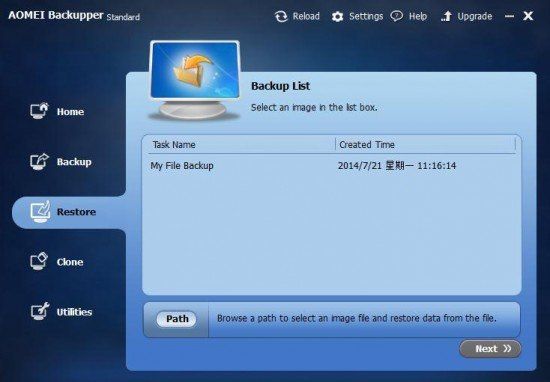

There are many programs out there for capturing Full Image backups, some of them are: Software List of other Full Image Backup Software Select the Eject option above the correct device.

click the system tray option to show more icons.Ĭ. Remember to Eject the drive if it is a USB Device.Ī. To view more information about the Backup, including the finish time click the link below the backup progress indicator.In most cases the drive letter will be correct. Click Add Set the Destination and Start.Make a note of the drive letter for the Backup destination, in our example it is drive F:.Select the Disk that is going to be the source of the backup ( in most cases it will be Disk0).Click the small pencil next to Task name and, name your backup, I would recommend using a format like: YYYYMMDD_BackupName, ie: 20221128_JohnDoeLaptopWin10.In order to make a first backup, make sure you have access to another store drive or network location that has enough available storage. Setup Download Aomei Backupper Standard (free)ĭownload and install Aomei Backupper freeīypass and skip all of the upgrade offers. See the bottom on this article for a list of other backup software options. We are going to focus on Aomei Backupper Free, as it is fairly generous in it’s free version and the backups are pretty maleable. A full image backup captures the whole filesystem, so that in the event of a hard drive failure, or total loss of the computer, the system can be restored entirely as it was at the time of the backup, even if restoring onto an entirely different computer.


 0 kommentar(er)
0 kommentar(er)
